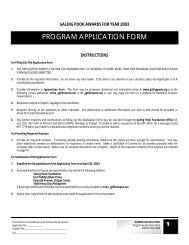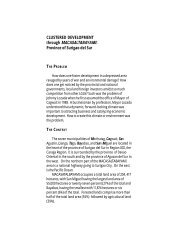kaban galing - front cover - galing pook
kaban galing - front cover - galing pook
kaban galing - front cover - galing pook
Create successful ePaper yourself
Turn your PDF publications into a flip-book with our unique Google optimized e-Paper software.
36 DAVAO CITY<br />
By Right and By Law<br />
Mainstreaming Gender and Development (GAD)<br />
in the LGU of Davao City<br />
MORE than half of Davao City’s population of 1.15 million, as of 2002,<br />
are women. Gender ratio is 99 males per 100 women. By their sheer<br />
number, women contribute significantly to the city’s development. Yet<br />
for a long time, this contribution had hardly been recognized. And myriad<br />
of women issues had not been adequately addressed.<br />
From Fore<strong>front</strong> to Mainstream<br />
Political upheavals during 20 years of President Marcos’ strong-man<br />
rule greatly raised people’s awareness of women’s role in society and<br />
of women’s issues. The struggle against the dictatorship created a strong<br />
women’s movement in Davao City. When the city was still known as the<br />
“Nicaragua of Asia”, the women of Davao organized themselves into<br />
the Women’s Force. They waged WAR (Women Against Rape) against<br />
abuse of women under Martial Law. They also formed the Assembly for<br />
the International Decade of Women, or AID Women, to participate in<br />
the United Nations conference in Kenya in 1985.<br />
By the time Marcos fell from power, a lot of women’s groups were in<br />
place to pursue advocacy of women’s rights and welfare through gender<br />
mainstreaming.<br />
In 1986 two women were appointed members of the city council, a<br />
first in the city’s history. The late 1980s saw more efforts toward<br />
empowerment of women through grassroots organizing, paralegal<br />
training, and recognition of “women’s rights as human rights.” The early<br />
1990s were a time for advancing women’s agenda. Women’s groups<br />
worked to formulate legislative measures, seek sectoral representation,<br />
form study groups to draft the Women’s Code, conduct research and<br />
136












![[Year] Paano Tayo Aasenso? - Galing Pook Foundation](https://img.yumpu.com/3809385/1/184x260/year-paano-tayo-aasenso-galing-pook-foundation.jpg?quality=85)